‘Guardians of the Galaxy Vol. 3’ Required Over 3,000 VFX Shots for Rocket’s Backstory, Cosmo and ‘No Sleep Till Brooklyn’ Battle
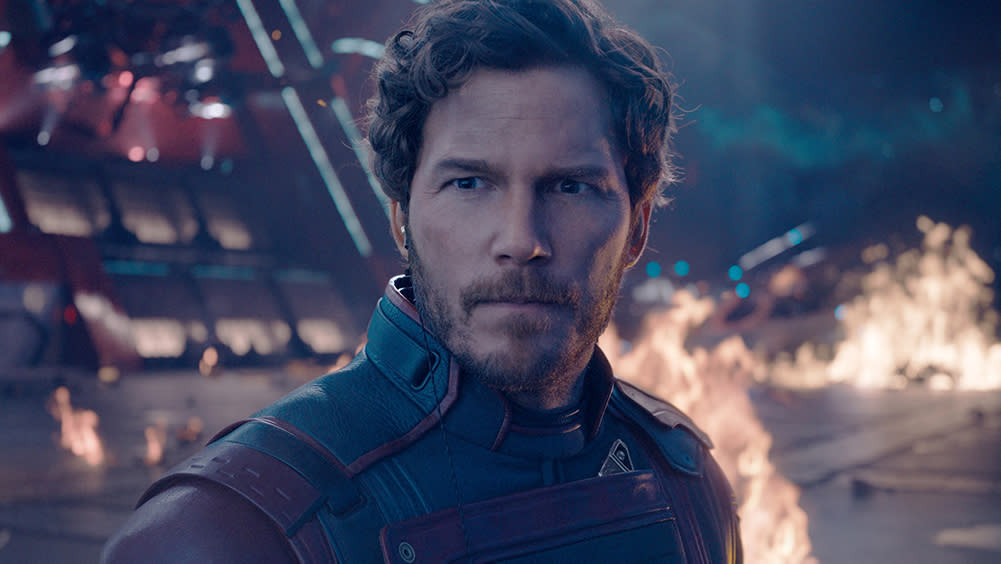
- Oops!Something went wrong.Please try again later.
- Oops!Something went wrong.Please try again later.
- Oops!Something went wrong.Please try again later.
- Oops!Something went wrong.Please try again later.
- Oops!Something went wrong.Please try again later.
It took a village of 10 visual effects houses, including Weta FX and Framestore, and 3066 visual effects shots to help bring James Gunn’s “Guardians of the Galaxy Vol. 3” to life over 15 months of post-production.
From studying baby raccoons for the backstory of Rocket (voiced by Bradley Cooper) to golden retrievers for talking dog Cosmo, the VFX supervisors spent months putting together the sequences — some with explosions and complex action, including the film’s already iconic two-minute one-shot scene timed perfectly to the beats of the Beastie Boys’ “No Sleep Till Brooklyn.”
More from Variety
The teams break down the process behind some of their VFX magic and how they navigated some of the most challenging scenes.
Cosmo
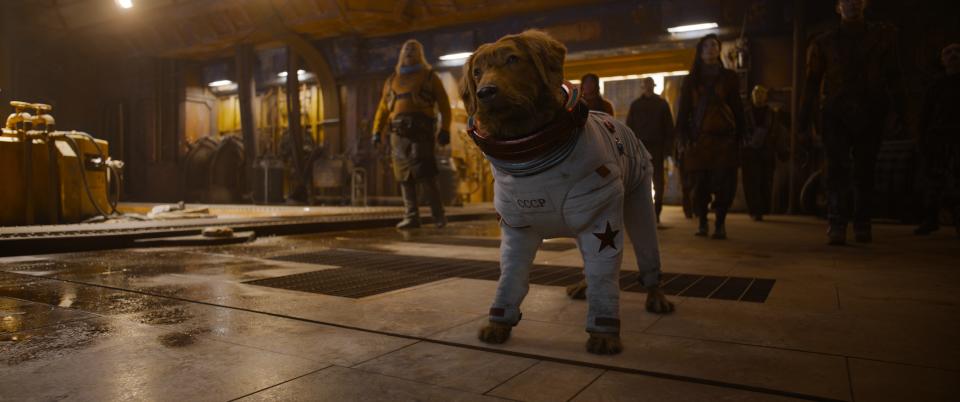
When it came to creating Cosmo, the photoreal dog voiced by Maria Bakalova, Stephane Naze, VFX supervisor for Framestore, says the team pulled together photos and footage of a real dog and made it CG. But the process wasn’t as simple as that because Cosmo wasn’t just a dog — she was a talking dog.
In the film, Cosmo spends much of “Guardians of the Galaxy Vol. 3” annoyed at Kraglin (Sean Gunn) for calling her a “bad dog,” but she earns her stripes during the final battle by using her telekinesis to help protect the people of Knowhere. Cosmo remains a Guardian by the end of the film.
Naze says Cosmo needed to have emotion. The key to that was looking at Bakalova: “Everything came from her. She was saying the lines and it was super important to feel that. So, we analyzed her performance shot for shot and what was the best way to translate those emotions.”
Naze adds that it was always decided that Cosmo would be a golden retriever inspired by Slate, a golden retriever who was on set and belonged to one of the producers.
“Our character supervisor at Framestore also has the same dog and was always sending videos saying ‘Here’s the dog being sad. Here’s the dog being funny’ and I would take photos of Slate or ask our guy to take photos of the eye so we could have more detail.”
Guardians Stampede Scene
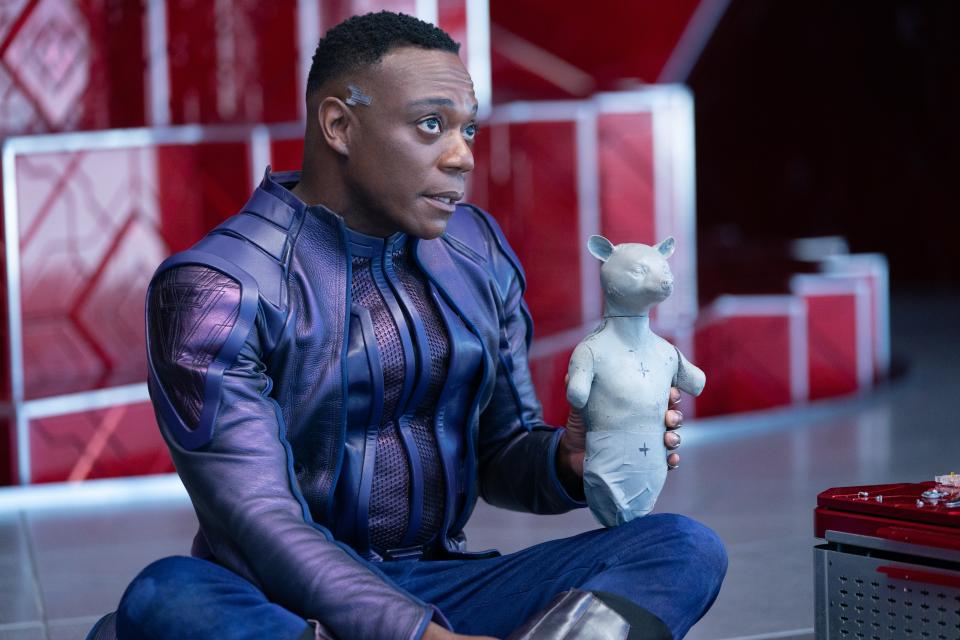
Framestore also worked on the “stampede” sequence, which sees Mantis, the Guardians and over 500 animals being rescued from the High Evolutionary’s (Chuckwudi Iwuji) ship.
Alexis Wajsbrot of Framestore London says it was one of the most technically challenging sequences. Not only is it hard to do crowd scenes in general, but Wasjbrot also explains there were animals “all bouncing and interacting with one another, in the middle of the Guardians, and you add fur to the creatures. It becomes a heavy scene to tweak and manage.”
They started working on the shots as soon as they were commissioned to work on the film. It was also the last shot they delivered.
“The challenge was making sure that sequence was believable,” Wajsbrot says. They began by using plate shots with the Guardians running and holding gray beanbags “pretending to hold animals, but that didn’t work, so the animals and the Guardian’s hands ended up being CG.”
In addition, Cosmo, who uses her psychic powers to bridge the two ships together, also required hand animation effects.
Further adding to the challenge were the effects of the two ships exploding and separating.
“That was a huge effects moment of fire, debris and sparks, as well as all the animals. Despite the sequence being only 17 shots,” Wajsbrot says, “There was a lot of detail in the stampede from fur, to the turtles, to a monkey on top of a pig. They’re flowing and bouncing off one another and reacting to the Guardians. It was a lot of hand frame animation to get that.”
Rocket’s backstory
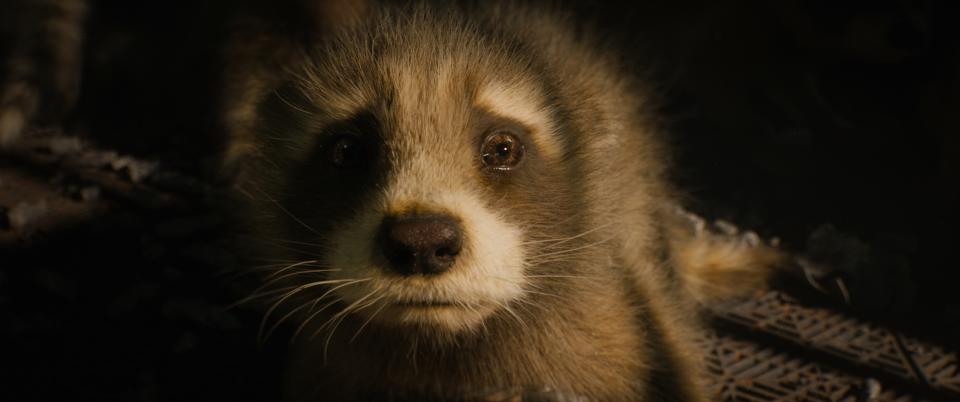
What gives the film its heart is Rocket’s heartbreaking backstory. Audiences learn he’s been part of the High Evolutionary’s mad scientist scheme to create an advanced species. Rocket witnesses the villain kill his close friends.
Wajsbrot says there were six different stages of Rocket, with the baby version being inspired by real raccoons.
Using the blend shape technique, they could animate the characteristics to show the various stages. Whether it was transitioning him from being on all fours to “giving him shoulders to make him more human-like.” Or “using fewer animation effects when he’s a baby and when he’s an adult, we pushed his emotions.”
Stef Ceretti, VFX supervisor, worked on the shots, many of which are set in cages. In total, the scenes took over a year and a half to put together.
Having worked with Gunn from the beginning, Ceretti says the director’s shooting style has changed: “It’s very fluid. He is very specific about the way he shoots things now. He has that RED camera and he wanted everything that was happening in the cages to be shot the same way as everything else that happens in the film. [In other words], he wanted his shooting style to be reflected in those full CG scenes. We talked about virtual production and how to achieve this and we decided to shoot the first two days of the film with the actors, including Sean Gunn on a volume stage where we capture the motion of the camera so that James could shoot the scene with the actors exactly the way he wanted to cover it.”
Using three cameras, Ceretti explained that, rather than motion capturing the actors, the team captured the cameras “so that we could edit the scene and know exactly what we needed in terms of coverage.”
‘No Sleep Till Brooklyn’ Battle
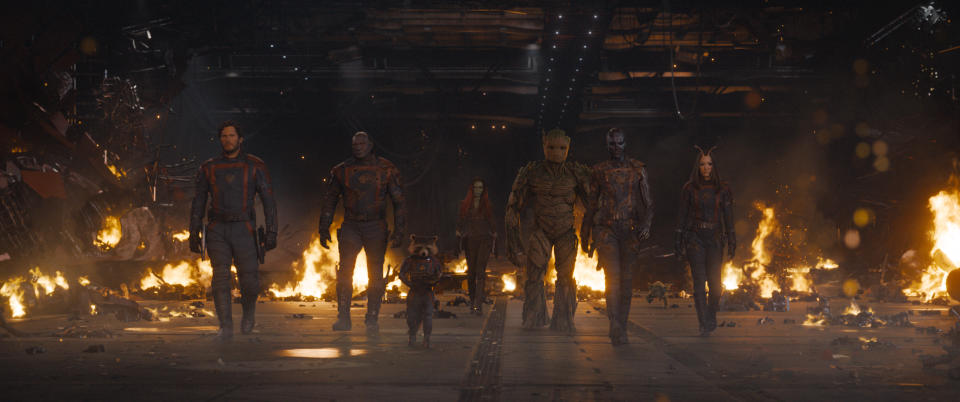
VFX supervisor Guy Williams and animation supervisor Michael Cozens at Wētā FX led the effects for the film’s third act, which features the Beastie Boys smash hit “No Sleep Till Brooklyn.”
The song plays during the epic showdown between the Guardians and the High Evolutionary and the
battle features a two-minute long “oner” shot, without any cuts, unfurling through the battle onboard the Arete. The moment is comprised of 18 separate shots that were digitally stitched together.
Says Williams, “If you’ve ever read a James Gunn script, he thinks about the music as he writes. He’s a very lyrical director.”
It required a collaboration of VFX, stunt coordinators and Gunn’s direction to figure out the choreography of the scene.
“When Zoe Saldaña is slammed against the wall, it goes to the stunt person and then back to Zoe. There’s a lot of back and forth and we have to make that handoff invisible,” he explains. “We have to figure out at what point we’re going to swap over to a digital character so that we can really seamlessly blend the two and put it back together.”
The biggest challenge was setting the action to music and maintaining the rhythm. Cozens explains keeping things in sync was a tricky balance: “Our initial pass is a blocking pass of all the characters and the action timings for explosions and gunshots to the beats of the song.”
Additionally, there were, “camera cut points with Chris Pratt’s Quill and Nebula and we had to bridge those moments with digital work. We had to maintain that through the post-production of that single shot.”
Best of Variety
Sign up for Variety’s Newsletter. For the latest news, follow us on Facebook, Twitter, and Instagram.

